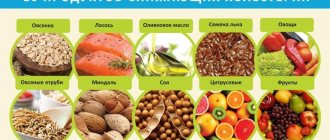Prevention of influenza, ARVI and coronavirus is a single set of measures aimed at preventing morbidity. The words of Hippocrates are relevant today: “It is easier to prevent a disease than to treat it.” Compliance with preventive measures helps protect against infection, reduce the risk of large-scale spread of infection, and save people’s lives.
With the advent of the pandemic, the whole world has felt the importance of preventing respiratory infections. COVID-19 has forced humanity to take a fresh look at ways to stay healthy. On a par with coronavirus infection are influenza and ARVI, which people encounter in the fall and spring. As practice shows, seasonal diseases sometimes cause complications no less severe than Covid. Prevention of influenza and ARVI, developed by epidemiologists, helps protect against infection and its consequences. Read about the characteristics of respiratory viruses, means and methods of protection against infection in our article.
Causes of the disease
A sick person is a carrier of respiratory viruses. Infection occurs by airborne droplets. The likelihood of infection during an epidemic increases in places where there is a high concentration of the virus: public transport, crowded places (shops, entertainment events), schools, universities, and so on.
The following pathogens play a leading role in the etiology of respiratory infections:
- influenza and parainfluenza viruses (differ in type);
- rhinoviruses;
- adenoviruses;
- respiratory syncytial virus;
- enteroviruses;
- rotaviruses;
- picornoviruses;
- reoviruses6.
In 10-15% of cases of influenza infection during an epidemic, adenovirus is observed.
The statistics of ARVI pathogens varies depending on age. For example, respiratory syncytial and adenoviruses most often affect young children, while influenza and rhinoviruses most often affect adults.
Untimely treatment of viral respiratory infections leads to the addition of bacterial agents. This complicates the course of the disease, slows down recovery and may result in the development of complications. The main bacteria for acute respiratory infections: streptococci, pneumococci, Haemophilus influenzae, moraxella and mycoplasma.
Medicines to prevent colds
The development of colds is prevented by special medications that help strengthen the immune system. You can increase the body's overall resistance with multivitamins. They improve metabolism, the reproduction of protective cells and accelerate tissue repair. Vitamins are taken in courses of several weeks with a break of 1 month.
Antiviral drugs effectively prevent the disease. They belong to the group of immunomodulators and immunostimulants and are available in the form of tablets, solutions and suppositories. To prevent colds in children, it is convenient to take syrup.
You can buy the following medications in pharmacies:
- Arbidol;
- Kagocel;
- Anaferon;
- Aflubin;
- Rimantadine;
- Kipferon;
- Oscillococcinum;
- Genferon;
- Viferon;
- Lycopid;
- Amiksin;
- Lavomax;
Tablets for the prevention of ARVI increase the production of your own interferon and antibodies, which are necessary to suppress the viral infection. Medicines should be used before contact with a person with a cold occurs and symptoms of the disease appear. This will prepare the body and avoid illness.
How to recognize ARVI?
In the structure of respiratory infections, the leading importance is occupied by influenza viruses of types A, B, C. Every year, influenza affects at least 10% of the world's population. The clinical picture of the disease includes general symptoms:
- Fever (temperature rises sharply to febrile levels above 38 °C);
- Headache;
- Aches of muscles, bones;
- Pain in the eyes, photophobia6.
General intoxication is the predominant symptom of influenza, as opposed to other viral infections.
Damage to the respiratory tract occurs in the form of inflammatory reactions. The level of damage depends on the pathogen. In most people, several parts are affected at once, but isolated forms also occur. ARVI involves the appearance of the following types of inflammation:
- rhinitis (runny nose, swelling of the nasal mucosa);
- laryngitis (sore throat, hoarseness, barking cough, swelling of the mucous membrane);
- pharyngitis (sore throat, sore throat, hoarse voice);
- tonsillitis (sore throat, enlarged tonsils);
- tracheitis (dry cough);
- bronchitis (dry or productive cough, wheezing);
- bronchiolitis (dry or productive cough)6.
During an epidemic, the influenza virus often leads to the development of severe viral pneumonia, which is one of the dangerous complications of the disease.
The clinical picture depends on the causative agent of the respiratory disease. However, recognizing the source of infection solely by symptoms is extremely difficult. To confirm infection with a specific virus, laboratory serological diagnostic methods are used.
Flu
Influenza also belongs to the group of acute respiratory viral infections, however, due to the tendency of influenza to spread with the development of epidemics, it is isolated separately. In addition, influenza is accompanied by more pronounced clinical manifestations and has a higher risk of complications. There is a subtype of the H5N1 influenza virus that is transmitted from sick birds (ducks, chickens) to humans (“bird” flu) or pigs (“swine” flu).
Influenza is characterized by an acute onset with a rise in temperature to 38–40 °C, accompanied by pain and aches in the muscles, headache, chills, weakness, general weakness, and poor appetite. Then comes pain and sore throat, dry cough. A runny nose is not typical for influenza, which distinguishes it from other acute respiratory viral infections (“dry catarrh”). Body temperature returns to normal on days 3–5 of illness.
Complications of influenza, in addition to pneumonia, include inflammation of the paranasal sinuses, middle ear (especially in children), respiratory distress syndrome (pulmonary edema), and meningitis. The flu is most dangerous for young children, the elderly, as well as for patients with HIV infection, diabetes mellitus and people with weakened immune systems.
With acute respiratory viral infections and influenza, you need to be careful if your body temperature rises again and your health deteriorates - this indicates the development of complications or the presence of another disease. “Alarming signs”, if they appear, you should definitely consult a doctor:
Maintaining an elevated body temperature (more than 37.5 °C) for more than 7 days, as well as its repeated increase;
- increased headache;
- vomit;
- drowsiness or confusion;
- stiff neck (inability to bend your head so that your chin touches your chest);
- shortness of breath (difficulty breathing);
- chest pain;
- bloody sputum;
- any rash on the skin;
- intolerance to bright light.
The diagnosis of ARVI and/or influenza is most often beyond doubt and is based on a characteristic clinical picture. To identify complications of ARVI, a general blood and urine test, x-ray of the chest or paranasal sinuses, and sometimes bacteriological analysis of sputum may be required.
1 Laboratory diagnostics in MedicCity
2 Laboratory diagnostics in MedicCity
3 Laboratory diagnostics in MedicCity
Treatment of influenza and ARVI
- Follow home regime. If there is someone else in the apartment besides you, wear a medical mask, which you change every 2 hours.
- Drink more warm fluids (up to 2 liters per day) - this will avoid dehydration in conditions of high body temperature and improve the removal of toxins from the body.
- If your body temperature rises above 38.5 °C, or if you cannot tolerate high fever, take antipyretics (paracetamol, acetylsalicylic acid). Remember that acetylsalicylic acid (aspirin) is strictly contraindicated for children under 16 years of age!!!
- To relieve the symptoms of ARVI, you can use complex preparations containing, in addition to antipyretics, antitussive, antiallergic components, as well as vitamins. Read the instructions for use carefully!
- To relieve cough, you can take all kinds of herbal infusions or expectorants, but these drugs do not affect the duration of the disease.
- To influence pathogens, interferons (the main factor of antiviral defense in the body) and stimulators of interferon formation are used; oseltamivir or zanamivir (effective only for influenza); anti-influenza immunoglobulin is administered to weakened people, as well as to patients with severe forms of influenza. Before taking these medications, consult your doctor!
- Antibiotics are not used to treat uncomplicated forms of ARVI and influenza because they do not affect viruses.
Complications of respiratory infections
The most dangerous complication of ARVI is infectious-toxic shock. It develops in patients with influenza infection who are not receiving treatment and are often weakened. Requires immediate medical attention, but is rare outside the epidemic period.
The most common complication is the addition of a bacterial infection. The definition criterion is the duration of fever over 3-5 days with progression of clinical manifestations. In such situations, it is necessary to include antibacterial therapy.
Help prevent the development of complications:
- Seasonal prevention of acute respiratory infections;
- Maintaining immunity;
- Timely treatment of viral infections.
The problem is that patients visit doctors late - 3-4 days after the onset of ARVI, when the risk of bacteria (especially during an epidemic period) approaches 100%. Prophylactic antibiotics are not prescribed for the development of acute respiratory infections.
Daily routine and hardening
Colds and flu can be prevented with the help of hardening procedures, which begin in the summer. In childhood and untrained people, you can wipe with a damp towel, pour cool water over your feet, gradually lowering the temperature. Hardening helps improve thermoregulation; the body will not react to hypothermia with a cold.
But hardening procedures do not give an effect immediately and only when carried out regularly. If you stop dousing, after a few weeks the body will again become susceptible to disease.
To prevent colds, it is important to follow a daily routine and avoid stress. During sleep, the hormone melatonin is produced, which is involved in regulating the function and coordinated functioning of the nervous, endocrine and immune systems. An important condition is to go to bed before 23:00, do not watch TV before bed and do not use gadgets. Melatonin is produced only in complete darkness.
Principles of combating acute respiratory infections
The fight against ARVI includes several stages:
- Seasonal prevention and vaccination;
- Emergency prevention during an epidemic;
- Emergency prevention after contact with a viral pathogen;
- Treatment of ARVI;
- Treatment of attached bacterial lesions;
- Prevention of recurrent diseases.
The basis for the prevention and treatment of influenza and acute respiratory infections are immunomodulators of various types. They are used seasonally, during emergency prevention and during the treatment stages. They can be local and systemic; their work is based on different mechanisms:
- Supply of interferon to the human body;
- Strengthening the production of your own protective substances.
Their main drawback is that they affect only the viral component of the disease, so the drugs are effective only in the first phase of ARVI (before the addition of bacterial infection).
Another group of drugs used to treat acute respiratory infections are antiviral drugs. They inhibit the growth of the virus and suppress its activity and spread. Therefore, the use of such drugs is especially important in the early stages of the disease. It is worth noting that modern antiviral agents are extremely specific to the pathogen. For example, zanamivir and oseltamivir are active against influenza viruses type A and B, but do not affect other viruses7. However, in a non-epidemic period, the influenza virus in the structure of ARVI does not exceed 10%, so the use of such drugs outside of an epidemic is doubtful1.
Antibacterial agents are used only after the addition of a bacterial pathogen. Prophylactic use “just in case” leads to the formation of resistance, which is unacceptable in modern medicine, as well as to undesirable side effects.
Symptomatic drugs are used to alleviate the condition of patients. Standard methods for reducing intoxication are also used, which is especially important for influenza: drinking plenty of fluids, bed rest, an adequate diet with a predominance of liquid and warm foods4.
What to do if you get sick?
Fever, weakness, soreness, lacrimation are early signs of infection. When they appear, it is not recommended to leave the house. Firstly, so as not to spread viruses, and secondly, so as not to worsen your health. You can call a therapist or pediatrician by phone. In case of extreme temperatures, it is better to call an ambulance. Before the doctor arrives, the sick person must be put to bed and given warm tea (fruit juice). It is advisable to put a medical mask on the patient, provide him with a separate room, dishes, and hygiene items. To prevent complications, it is important to follow medical prescriptions - take medications, drink plenty of fluids, ventilate the room, eat foods rich in vitamins, phytoncides, and protein. In the first days of illness it is necessary to observe bed rest. If you have the flu, physical activity can trigger the development of acute respiratory distress syndrome, an extremely life-threatening condition.
Effective prevention of influenza and ARVI
Prevention of acute respiratory infections involves maintaining a healthy lifestyle, replenishing vitamin deficiencies and deficiencies of macro- and microelements. During the epidemic, it is recommended to avoid public places, wear protective masks and pay attention to wet cleaning of premises and regular ventilation.
Additional prevention includes vaccination against influenza - optional, but mandatory for people at risk, for example, with immunodeficiencies. Vaccination against streptococcus is also performed. Seasonal and emergency prophylaxis involve the use of specific immunomodulatory agents2.
Home prevention methods
Preventing colds should begin in the summer. The condition of the body depends on nutrition and the intake of vitamins. A healthy lifestyle and balanced diet will help support your immune system. To do this, you need to include vegetables and fruits, fermented milk products, and a sufficient amount of lean meat and fish in your menu.
Traditional methods of preventing ARVI recommend medicinal plants and products with an immunostimulating effect. These include:
- ginger;
- garlic;
- onion;
- lemon;
- mint;
- echinacea;
- birch mushroom.
An effective method of preventing colds is staying hydrated. An adult needs 1.5-2 liters of clean water per day. This volume supports the functioning of the kidneys, helps them quickly filter the blood and remove toxic substances, viruses and metabolic products.
IRS®19 in the prevention of ARVI
IRS®19 is a local immunomodulator that is used for the treatment and prevention of respiratory infections. Available in the form of a nasal spray and approved for children over 3 months3.
Prevention of influenza and ARVI with the use of IRS®19 is due to a mixture of 18 bacterial lysates included in the drug. Lysates are breakdown products of pathogenic microorganisms that do not cause disease. They trigger a response from the human immune system, thereby increasing the body’s defenses outside of illness and accelerating recovery during infection5.
The drug is indicated at any stage of the fight against ARVI:
- Treatment of acute respiratory infections;
- Prevention of acute respiratory infections;
- Restoring defenses after acute respiratory viral infections and influenza3.
For proper use of the drug, it must be sprayed onto the cleansed nasal mucosa. People with rhinitis or sinusitis first rinse their nose and use vasoconstrictors to maximize the flow of the spray into the mucous membrane.
The drug begins to act within a few minutes after contact with the mucous membrane, causing a local immune response of the body5. This allows you to fight pathogens after contact with them during an epidemic. Adaptive (local) immunity begins to form within 2-4 weeks. The preventive effect and protection against respiratory pathogens of the antiviral drug IRS®19 lasts for three to four months8.
Vitamins to strengthen the immune system
Special blood tests help determine which vitamins the body lacks. The main marker of stable immune function is considered to be normal levels of vitamin D hormone. It enters the body with food and is synthesized by skin cells under the influence of sunlight. Considering the deficiency of ultraviolet radiation in most Russian regions, it is recommended to take the vitamin hormone in the form of a dietary supplement. To prevent respiratory diseases, the immune system needs B vitamins, ascorbic acid, and fat-soluble vitamins A and E.
Products that contain vitamins for the prevention of ARVI and influenza
Ascorbic acid (vitamin C):
- sauerkraut
- bell pepper
- citrus
- cranberry
- currant
- rose hip
Group B:
- nuts
- milk
- legumes
- buckwheat
- oats
- tomatoes
Tocopherol (E):
- sea buckthorn
- spinach
- broccoli
- bran
- eggs
- vegetable oils
Retinol (A):
- carrot
- green onions
- parsley
- peaches
- apricots
- melon
Replenishing vitamin reserves through nutrition alone is an impossible task. To maintain the immune system in a state of combat readiness, an additional source is needed - pharmacy vitamin complexes:
• Supradin Immuno Forte; • Doctor More; • Multi-tabs Immuno Plus; • Pediakid syrup; • Superum Echinacea Vitamin C Complex.
The most modern and effective means for strengthening the immune system can be ordered with home delivery.
Main advantages of IRS®19:
- Reduces the risk of developing bacterial complications, as it simultaneously affects both the viral and bacterial components of the infection9;
- Activates the synthesis of human’s own interferon3;
- Available for use from three months of age3;
- Activates nonspecific protection of the nasal mucosa within an hour5;
- Helps reduce the duration of the disease by 3 days*5.
The drug is an addition to the treatment and prevention of acute respiratory viral infections. It does not replace antibacterial therapy and can complement other immunomodulatory agents.
Acute respiratory viral infections are the most common diseases throughout the world. It is unacceptable to underestimate their impact on the human body, since with untimely treatment and lack of prevention, the problem is aggravated by bacterial complications.
Although acute respiratory viral infections are pathologies of a viral nature, one cannot forget about the rapid (within 3-5 days) addition of bacteria. Measures to prevent influenza and ARVI should be aimed not only at the viral component, but also at the bacterial one.
A drug that affects both mechanisms of ARVI development is IRS®19. It is used as a nasal spray, causing an immediate non-specific response in the nasal mucosa. The drug promotes the production of its own interferon, triggers the formation of the body’s antibacterial response, and therefore is used both for the treatment of ARVI and for seasonal prevention3,8.
It is people at risk who should primarily use influenza preventive measures and be especially closely monitored by doctors in case of infection.
What is influenza and ARVI?
It's no secret that it is the cold season that becomes the finest hour for this large-scale trouble. Chronic hypothermia, coupled with an unlimited number of carriers of harmful viruses, is an ideal breeding ground for the development of colds. A few years ago, our doctors preferred to group them into the group “Acute respiratory diseases (ARI).” But now every doctor knows: a more correct name for these “monsters” is acute respiratory viral infections (ARVI). According to the World Health Organization, ARVI should be considered the most common illness. They account for up to 95% of all cases of infectious diseases. The biggest trouble is that everyone gets ARVI. And there is no person on earth who has not experienced all their harm at least once in his life.
ARVI is a “set” of severe viral infections that affects men, women and children of all ages and nationalities. Acute respiratory viral infections gradually undermine the cardiovascular system, reducing the average human life expectancy by several years. In severe cases of influenza, irreversible damage to the cardiovascular system, respiratory organs, and central nervous system often occurs, causing heart and vascular diseases, pneumonia, tracheobronchitis, and meningoencephalitis.
The term ARVI or “acute respiratory viral infection” covers a large number of diseases that are largely similar to each other. Their main similarity is that they are all caused by viruses that enter the body along with inhaled air through the mouth and nasopharynx, and also that they are all characterized by the same set of symptoms. The patient has a fever, sore throat, cough and headache for several days. The most common respiratory disease is a runny nose (acute rhinitis); it is caused by a number of related viruses known as rhinoviruses. Upon recovery, all these symptoms disappear and leave no traces behind.
Influenza (this is what ARVI is sometimes called) is caused directly by the influenza virus (Myxovirus influenzae), which belongs to the orthomyxovirus family. Diseases Influenza and ARVI rank first in frequency and number of cases in the world and account for 95% of all infectious diseases. In Russia, from 27.3 to 41.2 million cases of influenza and other acute respiratory viral infections are registered annually. Influenza viruses constantly change as they interact with the human body. This process explains most of the changes in influenza and ARVI viruses from one season to the next. Antigenic shift occurs randomly. If this happens, then a large number of people, sometimes entire populations, are left without protection from this virus. It is this circumstance that makes the creation of a universal vaccine against influenza AND ARVI useless.
What types of influenza virus are there?
There are three types of influenza viruses - A, B and C. These viruses are slightly different in structure and cause diseases of varying severity. Influenza A virus causes the most severe forms of the disease (unlike types B and C, which are more easily tolerated by humans).
How dangerous is the flu?
It is a common belief that the flu is a common illness that people get sick every year, and nothing bad happens. Sadly, the flu is a disease that can sometimes be fatal. Mortality rates from influenza in the world are 0.01 - 0.2%, and average annual losses reach tens of thousands of people across different countries, including mainly children in the first years of life and the elderly.
The mortality rate among persons 5–19 years of age is 0.9 per 100,000 people, among persons over 65 years of age - 103.5 per 100,000 people. The greatest victims of influenza are among older groups of the population suffering from chronic diseases (those at “high risk”). Death with influenza occurs from intoxication, hemorrhages in vital centers (brain), from pulmonary complications (pneumonia, pleural empyema), cardiac or cardiopulmonary failure.
The main danger of influenza is the risk of developing post-influenza complications. The most common types of complications are:
- bacterial pneumonia
- rhinitis, sinusitis
- bronchitis
- otitis
- complications from the cardiovascular system
- muscle complications
- exacerbation of chronic diseases
Prevention
Prevention of ARVI consists of general health improvement, strengthening the body and stimulating the immune system through hardening, physical exercise in the fresh air, skiing, skating, swimming, eating nutritious food rich in vitamins, and in late winter and early spring - a moderate amount of vitamin preparations, better of natural origin.
At the height of the infection, it is recommended to limit attendance at public events, especially indoors, avoid too close contact with sick people, and wash your hands as often as possible. The same rules should be followed by patients: take sick leave, do not attend public events, strive to use public transport as little as possible, avoid close contact with healthy people, wear a gauze bandage, and aerosols are also used to disinfect the air in the room.
Is it possible to prevent ARVI diseases? Yes.
You should start with the most ordinary, simple, so necessary for health - breathing clean, fresh air. This is achieved by systematically ventilating the apartment and the room where the child is. It is useful to sleep with the window open, but avoid drafts. It is necessary to take frequent walks in the fresh air, in parks and squares. Visit the forest more and more often. Walking with proper breathing regulation enhances pulmonary ventilation, improves the circulatory system, and strengthens the child’s body.
During the period of massive spread of respiratory infections, it is recommended to visit crowded places (cinemas, theaters) less often, and walk more.
For individual prevention of influenza and ARVI, you can use 0.25% oxolinic ointment. It is lubricated with the mucous membranes of the nasal passages several times a day. It reduces the likelihood of disease by 2 or more times. The effectiveness of the ointment increases if it is applied before leaving the house and immediately before contact with the patient.
Leukocyte interferon is a highly effective preventive and therapeutic agent for influenza and ARVI. It has no contraindications for use and has no side effects; it is instilled or sprayed into the nose 3 times a day, 3-4 drops.
For individual prevention of influenza, rimantadine is used (1 tablet once a day for 20-30 days). It also helps with the initial signs of influenza. Delay in starting treatment by just one day reduces the value of the drug by almost half, and after two days it is practically useless.
To avoid getting the flu, you must:
- observe a study and rest regime, do not overwork, spend more time in the fresh air, sleep enough time, eat regularly and nutritiously;
- do morning exercises and wiping with cool water, exercise;
- If relatives become ill, isolate them in a separate room if possible.
Well, if you do get sick, you should immediately go to bed and call a doctor at home. Before his arrival, you can give 1 tablet of paracetamol and tea with raspberries, linden blossom, honey or rosehip infusion. During illness, especially if it is accompanied by high temperature, it is recommended to drink plenty of infusions and decoctions from these plants.
General strengthening measures
Hardening is the most important method of preventing respiratory infections (but not influenza) in our climate; it allows you to normalize the function of the respiratory tract during cooling, which reduces the dose of the virus that enters the body during infection. Therefore, by hardening you can, if not completely avoid a cold, then reduce the child’s sensitivity to it.
Additionally, you need to take ascorbic acid and multivitamins. Ascorbic acid (vitamin C) plays an important role in regulating redox processes, carbohydrate metabolism, blood clotting, and tissue regeneration. Helps increase the body's resistance, which is apparently due to the antioxidant properties of ascorbic acid. Vitamin C is taken orally 0.5-1 g 1-2 times a day. It should be noted that the largest amount of vitamin C is contained in the juice of sauerkraut, as well as citrus fruits - lemons, kiwi, tangerines, oranges, grapefruits. A healthy salad made from fresh cabbage with sunflower oil contains a large supply of vitamins and microelements.
Garlic. For prevention during flu epidemics and colds, you can take 2-3 cloves daily. It is enough to chew a clove of garlic for a few minutes to completely cleanse your mouth of bacteria. Eating onions also has a positive effect.
Daily use of fresh vegetables and fruits in the diet will increase overall immunity to viral diseases, and will also significantly lighten the family budget compared to the cost of medications.







